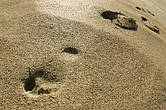Hubble telescope will get upgrade - BBC News
http://news.bbc.co.uk/2/hi/science/nature/6102690.stm
| | |||
The orbiting observatory has astounded astronomers and the public alike with its amazing pictures of the cosmos, but it will soon fail unless serviced. Dr Griffin told Nasa employees that recent modifications to the shuttle launch system meant he felt it was now safe to send a crew to work on Hubble. The mission, which will use the shuttle Discovery, should launch in 2008. Without servicing, the observatory is not expected to last more than two or three years. Its batteries and gyroscopes, which are used to point the telescope, are degrading and they will now be replaced. The shuttle crew will also install two new instruments: the Wide Field Camera 3 (WFC3), and the Cosmic Origins Spectrograph (COS). The new instruments will improve significantly Hubble's ability to see distant, faint objects in the early Universe. Haven of safety The servicing mission should extend Hubble's orbital lifetime to at least 2013, by which time Nasa will be getting close to launching a successor: the James Webb Space Telescope. [an error occurred while processing this directive]Dr Griffin's decision reverses that of his predecessor, Sean O'Keefe, who cancelled the planned visit in the wake of the Columbia shuttle disaster in 2003. The orbiter's heat shield had been damaged during launch and the ship was destroyed as it returned through the atmosphere for landing 16 days later. Mr O'Keefe had implemented a safe-haven policy for subsequent shuttle crews, which meant if their orbiters became damaged in a similar way they could stay on the International Space Station until rescued. A Hubble servicing mission was a casualty of this policy as shuttles do not carry sufficient fuel to move between the orbits of the observatory and the station. Dr Griffin's green light will now require Nasa to prepare an alternative rescue strategy if Discovery finds it has sustained catastrophic damage on the climb to orbit. Record of discovery This would involve sending up another shuttle to attempt a ship-to-ship transfer of astronauts. "There are very small odds that we would have a problem on ascent for which the remedy would be a launch-on-need shuttle - a rescue shuttle," explained Dr Griffin. "But against the very small probability that that could occur [we] have made the decision that we will carry that rescue option in the manifest; and that that rescue mission will consist of a shuttle waiting on the other pad from which we launch the Hubble mission." The news of a servicing mission will be greeted with jubilation by astronomers worldwide. The multi-billion-dollar mission has made a remarkable contribution to our understanding of the origin and evolution of the Universe. Hubble has obtained the deepest views of the cosmos, finding high-interest objects for other observatories to investigate in detail. Its studies of the Universe's expansion early in its mission dramatically refined the best estimates for the age of the cosmos. Its pictures have also produced definitive proof for the existence of black holes and confirmed theories of planetary formation. Scientists expect an upgraded Hubble to continue making groundbreaking discoveries. Maryland Senator Barbara Mikulski, who has campaigned for a servicing mission, called Tuesday "an exceptional day". "It's a great day for science, a great day for discovery, a great day for inspiration; because that's one of the things Hubble has meant to so many people," she told the Goddard meeting.
 | |||


















